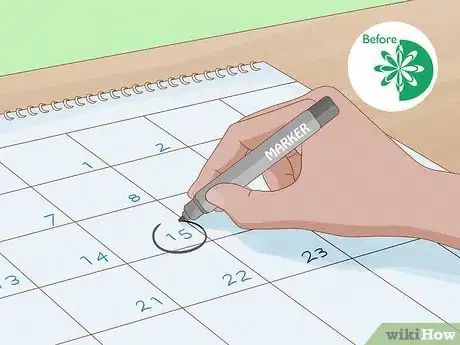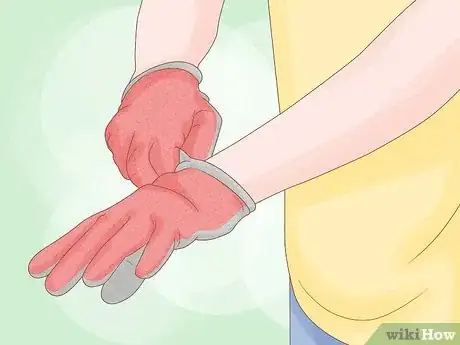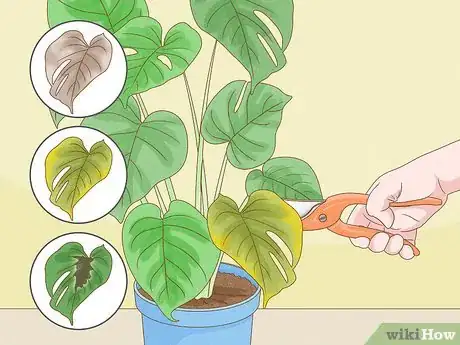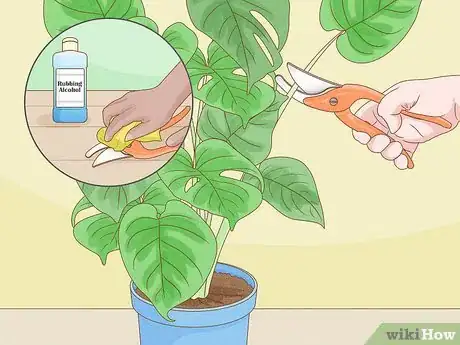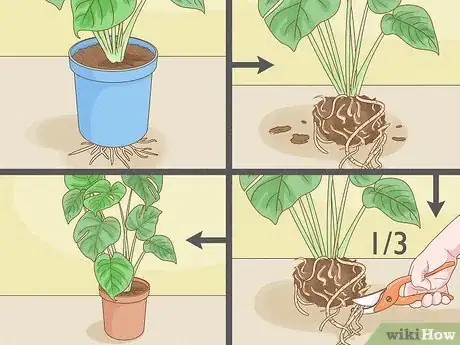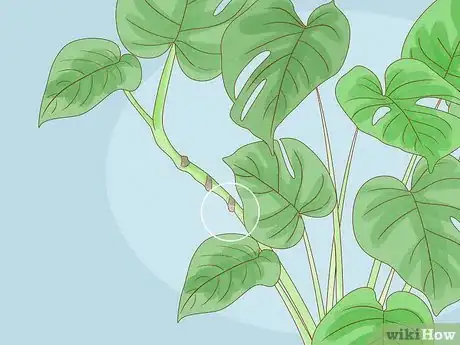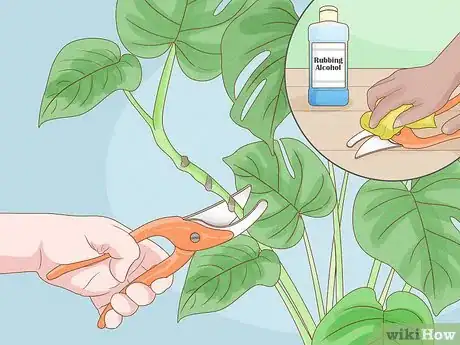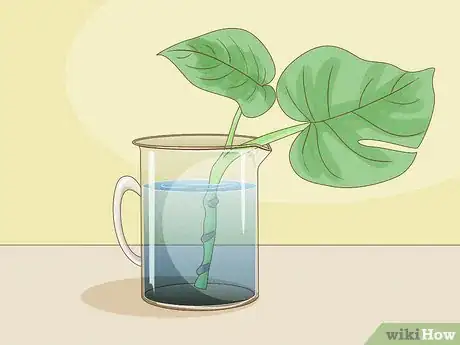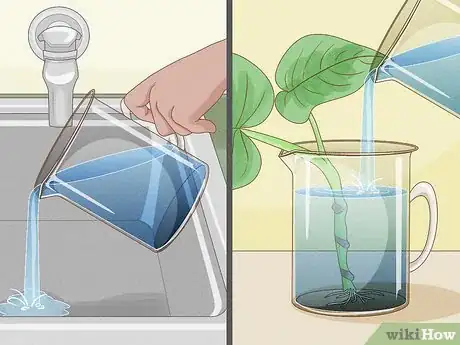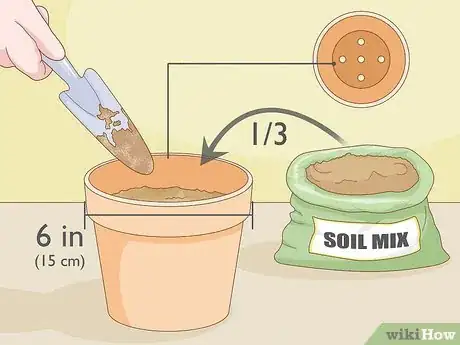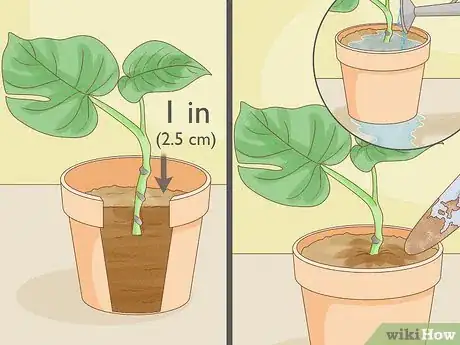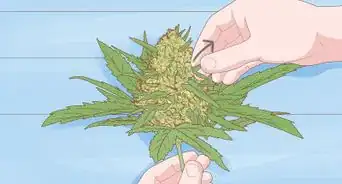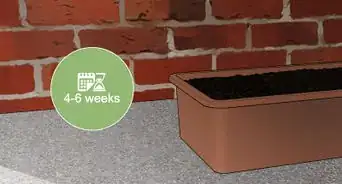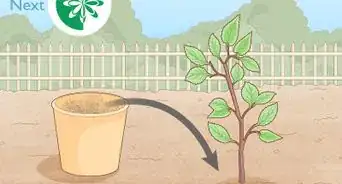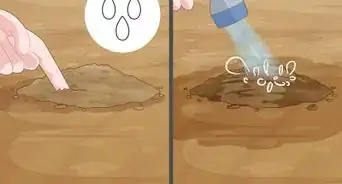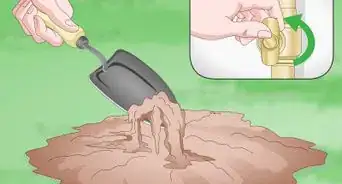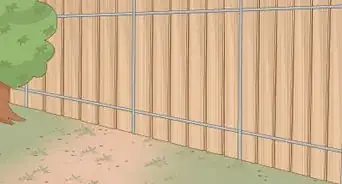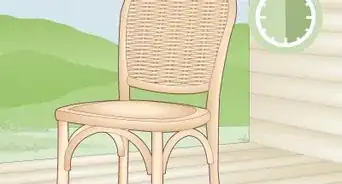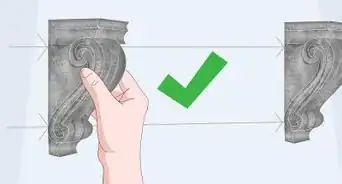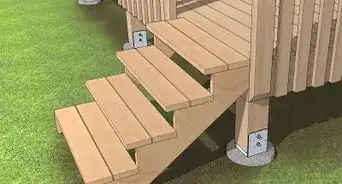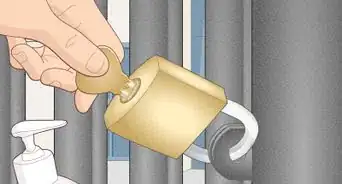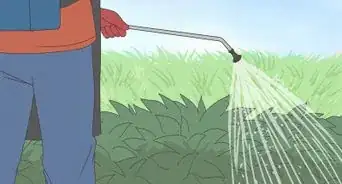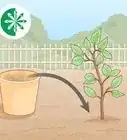This article was co-authored by Andi Xoch and by wikiHow staff writer, Jessica Gibson. Andi Xoch is a Plant Specialist and the Owner of Latinx with Plants, a plant shop and resource based in Los Angeles, California. With over a decade of experience in the plant and garden industry, she specializes in plant maintenance, growth, and education. Andi has grown her business from a pop-up shop at home to two brick-and-mortar plant shops. She aims to share how to use plants as a healing tool.
There are 12 references cited in this article, which can be found at the bottom of the page.
This article has been viewed 73,295 times.
Monstera deliciosa is instantly recognizable for its beautiful, holey leaves and vibrant green color. Since it's a vining plant, it can put on a lot of growth—up to 8 feet (2.4 m)! If your plant monstera deliciosa is starting to take over your space, make a few cuts to control the size and keep it looking great. Whether you're working with standard or variegated monstera deliciosa, the trimming methods are the same.
Steps
Pruning
-
1Plan on pruning your monstera before the spring growing season. If you're cutting back the plant to control its size or just to maintain its shape, try to do it before the spring growing season. This helps your plant recover faster.[1]
- If your plant has dry, yellow, or damaged leaves, it's totally okay to prune them any time during the year!
-
2Sanitize sharp scissors or garden shears with rubbing alcohol.[2] Dirty blades can transmit disease to your monstera, so wipe the scissors or shears with a cloth dipped in rubbing alcohol or diluted bleach. Want to make your own disinfecting solution? Mix 9 parts water with 1 part bleach.[3]
- If the shears or scissors are really dirty, soak them in water to loosen the dirt before you clean and disinfect them.
Advertisement -
3Wear gloves to protect your hands from the plant's irritating sap. Monstera deliciosa's sap has calcium oxalates that can irritate your skin and cause a rash. Pop on a pair of gloves before you start trimming the plant to prevent skin problems. If you have kids or pets at home, it's a good idea to trim your plant away from them.[4]
- Did you accidentally get sap on your skin? Wash your skin with soapy warm water as soon as you can and try not to touch your face or eyes.
-
4Snip off yellow, dry, or dead leaves near the base of the stem.[5] Whenever you see leaves that aren't healthy, use your sanitized shears or scissors to cut off the damaged leaves. Cut close to the base of the stem so you don't leave long, scraggly stems on the plant.[6]
- Keep in mind that yellow leaves might mean that the plant is getting too much water. Leaves that are turning brown at the ends mean that the plant isn't getting enough water.
-
5Cut off stems near the main branch to control the size of the plant. Step back and look for branches that are sticking out awkwardly or don't have many leaves. To cut back scraggly branches or reduce the size of your monstera, take sterilized shears and make a clean, straight cut across the branch where it meets the base stem.[7]
- Keep in mind that when you cut off branches, you'll encourage the plant to put on new growth near the base of the plant.
- You can make a cut below any node on a branch if you don't want to completely remove it. For example, cut back each branch by 1/3 or 1/2 if you simply want to control the size of the plant.
-
6Cut back 1/3 of the roots if you want to repot it. Can you see roots growing out of the pot's drainage holes? If so, carefully pull out the plant and loosen the roots with your fingers. Then, snip 1/3 of the root ends off with sterilized shears and fill your pot 1/3 full of fresh soil. Place the trimmed monstera into the pot and surround the plant with soil before you water it.[8]
- If you can't pull the plant out, turn the pot on its side and cut the roots that are sticking out of the holes. Then, you should be able to pull the plant out.
- Dealing with a really big plant? Ask a friend to help you lift the plant out of the pot and hold the plant.
- Throw these cuttings into the trash since they can take root and grow in your compost pile.
Propagating
-
1Find a healthy branch and locate the node. It's really easy to start a whole new monstera deliciosa from the plant you already have! Look for a healthy branch that has bright green leaves and find the node. The node is a bump or ring that's just below a leaf or stem on the branch.[9]
- It's important to take a cutting that includes the node or the cutting won't grow roots.
-
2Cut directly below the node of a healthy cutting. Take sanitized scissors or shears and cut the branch right below the node. You can cut straight across the branch, or cut it with a sharp knife if you don't have scissors that are sturdy enough.[10]
- Don't take a cutting from a branch that looks dry or has leaves that are brown.
-
3Put the bottom of the cutting into water. Pour cool water into a tall glass or vase and put the cutting into it so the bottom 2 inches (5.1 cm) of the cutting is submerged. It's a good idea to use a clear vase or glass so you can easily check on the roots.
-
4Change the water every few days for a few weeks or until roots form. Set the glass with the cutting in indirect light and leave the cutting until you see roots growing from the bottom. Replace the water every few days so the cutting doesn't rot.[11]
- Check your cutting every few weeks to see if roots have developed. The time it takes depends on the health and size of the cutting you made.
-
5Fill a pot with well-draining soil mix when you're ready to plant the cutting. Pick out pot that's at least 6 inches (15 cm) across and has drainage holes in the bottom. This prevents water from pooling near the roots of the plant. Then, fill the pot 1/3 full with a mixture of well-draining soil.[12]
- To make your own soil mixture, combine 3 parts potting soil with 2 parts perlite, pumice, or sand.
-
6Stick the cutting into the pot and surround it with soil. To plant your monstera deliciosa cutting, push the roots of the cutting into the soil so they're at least 1 inch (2.5 cm) deep. Hold the cutting steady and add more soil mix to the pot until it's almost to the top. Then, pour water into the pot until just until it starts to seep from the drainage holes at the bottom of the pot.[13]
- To care for your new plant, place it in a warm spot that gets indirect light, and water it whenever the soil feels dry.
Warnings
- Since the sap is toxic, trim your monstera deliciosa away from children or pets. Wear gloves to protect your hands from skin irritation.[16]⧼thumbs_response⧽
Things You'll Need
Controlling the Shape and Size
- Scissors or garden shears
- Rubbing alcohol or bleach
- Gloves
- Soil mix
- Pot, optional
References
- ↑ https://thehealthyhouseplant.com/why-when-how-to-prune-your-monstera-deliciosa/
- ↑ Andi Xoch. Plant Specialist. Expert Interview. 4 August 2021.
- ↑ https://ipm.missouri.edu/MEG/2018/1/cleaning_pruning_tools/
- ↑ https://thehealthyhouseplant.com/why-when-how-to-prune-your-monstera-deliciosa/
- ↑ Andi Xoch. Plant Specialist. Expert Interview. 4 August 2021.
- ↑ https://youtu.be/fxPX7QOkI3Y?t=1205
- ↑ https://thehealthyhouseplant.com/why-when-how-to-prune-your-monstera-deliciosa/
- ↑ https://thehealthyhouseplant.com/how-to-prune-monsteras-underground-roots-to-keep-your-plant-smaller/
- ↑ https://thehealthyhouseplant.com/everything-you-need-to-know-about-monsteras-and-nodes/
- ↑ https://thehealthyhouseplant.com/everything-you-need-to-know-about-monsteras-and-nodes/
- ↑ https://youtu.be/TiQ8IVhPBEc?t=593
- ↑ https://gardeningtips.in/growing-variegated-monstera-a-full-guide
- ↑ https://youtu.be/4QSJox3Pmo4?t=111
- ↑ https://youtu.be/5eKWxUKfBOY?t=1534
- ↑ https://youtu.be/fxPX7QOkI3Y?t=1265
- ↑ https://www.tagawagardens.com/documents/Toxic_%20Plants.pdf
